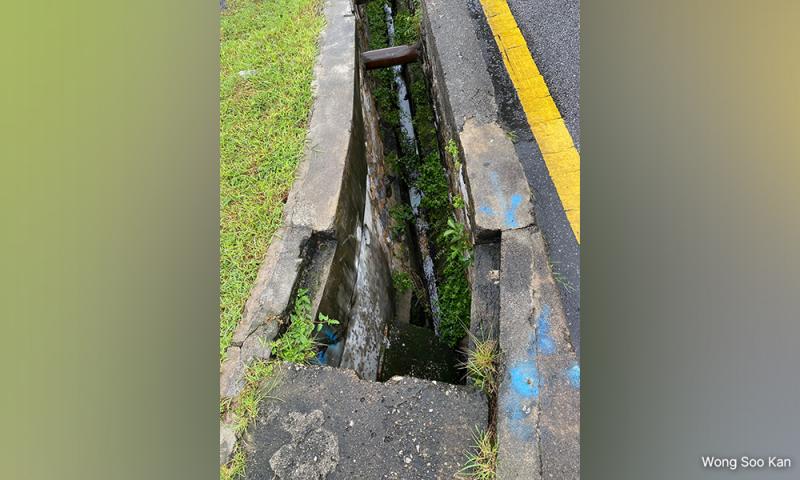LETTER | Open drains a cause for concern
LETTER | The primary purpose of a road drainage system is to remove excess water brought about by rainfall and keep the road structure dry.
Once water has been collected from the road and its surroundings, it is led out of the road area to an acceptable discharge point, usually, a natural water system such as a river or lake.
In the absence of the drainage system, many areas of the township would be subjected to regular flooding that could result in risks to public health.
The Street, Drainage and Building Act of 1974 was designed to serve the needs of local authorities in Malaysia regarding the planning and control of the development of streets, drainage and buildings within the local authority areas.
Most roads in existing townships were built many decades ago. At that time both sides of road shoulders were lined with six-feet-wide (about 1.8m) grass patches to keep pedestrians and vehicles at a safe distance from the drain.
The width and depth of drains were not regulated. Drains could be as deep as 2.5m to 3m or more to enable quick and effective drainage of rainwater.
Under the existing Urban Stormwater Management Manual 3rd Edition, issued by the Irrigation and Drainage Department, in chapter 26, titled “Open Drain” and in section 26.3.4 titled “Covers”, it is stated that open drains in locations open to pedestrian access shall be covered if the depth of the drain exceeds 0.6m. Most Malaysian drains fall in this category.
Fatal falls and serious injuries
The requirement for drain covers cannot be overstated, especially when it comes to pedestrian safety. They are crucial in preventing falls and accidents.
Over the decades, with the increase in traffic volume, local authorities widened roads to ease traffic movement. Grass patches on road shoulders were sacrificed for road widening. Drains are now at the edge of roads and there is no safe distance to drains. Anyone walking close to the open drain has a greater risk of falling into it.
In the last few years, there have been reports of fatal falls of people into uncovered drains. There were also numerous unreported accidents where people were seriously injured in such falls.
I highlight this because the feeder road SS24/9 at Taman Megah from Lebuhraya Damansara-Puchong (LDP) has the potential conditions for fall accidents.
The road which stretches from the LDP to connect road SS24/10 is approximately 100m long. The depth of the drain (above) close to the LDP is more than 3m deep and the depth reduces to 1.5m before reaching road SS24/10. Under the Urban Stormwater Management Manual guidelines, drains on both sides of road SS24/9 need to be covered.
Authorities must take responsibility
I also would like to highlight that the drain parallel to the LDP is covered with large precast reinforced concrete gratings to serve as a walking path. One of the concrete gratings is missing, exposing a large opening. The large opening poses a serious risk to pedestrians at night.
Local authorities have the responsibility to ensure amenities under their control are safe to the public. They have the duty to carry out on-site inspections of roads to identify hazards that could cause harm to the public and render them safe.
In turn, the next of kin of persons who succumbed to fatal accidents from unprotected drains could initiate legal actions against local authorities. Local authorities need to cover up drains that do not comply with the guidelines. The hazardous conditions of uncovered drains should not be tolerated at all costs.
The views expressed here are those of the author/contributor and do not necessarily represent the views of Malaysiakini.
RM12.50 / month
- Unlimited access to award-winning journalism
- Comment and share your opinions on all our articles
- Gift interesting stories to your friends
- Tax deductable
